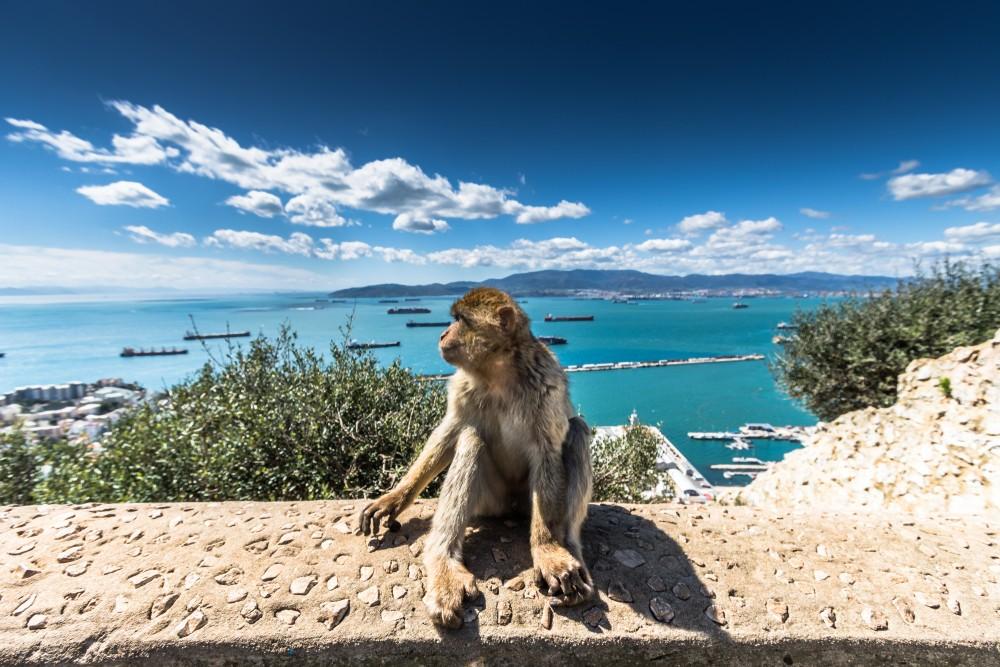
Land is scarce in this strait, and because this is the case, Gibraltar Airport affords itself a very rare “luxury”: its runway is intersected by one of the main roads. As a result, medium traffic chaos is to be expected on Winston Churchill Avenue whenever an airplane is announced. Gibraltar is hardly larger than Baltrum, the smallest of all East Frisian islands. The British have sovereign rights over the southernmost tip of the Iberian Peninsula. There, where on clear days you can not only guess at the African continent. A rock towers four hundred meters high in Gibraltar – it is the last natural fortress in Europe before Morocco. The tax haven became a bone of contention between Spain and England – and has been for about three hundred years now.
Undoubtedly, the most famous rock in Europe has a strategic importance. Napoleon already recognized this when the British destroyed his ships off Gibraltar on their way to Egypt . The British territory on the Mediterranean Sea is exactly 6.5 kilometres in size. But not big enough for the Gibraltar national football team, which has to play its home games in Faro , Portugal, because there was no space for a stadium in their home country. 30,000 people live in Gibraltar – and a few handfuls of Barbary macaques, not all of which are tame and pretty much all very cheeky. They prefer to threaten tourists and steal their bags…
And yet Gibraltar is a popular destination for tourists, most of whom come by land and thus from Spain. A shopping paradise has established itself around the famous rock, because VAT is a foreign word here and therefore alcohol, tobacco products, perfume and watches are quite cheap. The rock is also an interesting attraction for holidaymakers because there is the Gorham Cave Complex, which has been placed on the UNESCO World Heritage List. It is said that the last Neanderthals in Europe once lived here.

According to ancient tradition, the Rock of Gibraltar is said to have been one of the pillars of Hercules. Phoenicians and Romans later became interested in the interface between the European continent and Africa, before the Berbers reached out to Gibraltar in 711. One of the landmarks of the region, once called a “colony” by the United Nations, is the Ibrahim al-Ibrahim Mosque at Europa Point. It is one of the largest Islamic sacred buildings in a non-Islamic country and was inaugurated in 1994. This was a gift from the King of Saudi Arabia, Fahd ibn Abd al-Aziz.
The British Overseas Territory is now an important port for cruise ships. Every year, more than 40,000 passengers land at the Cruise Liner Terminal, the infinitely long pier behind North Mole Road. They then besiege not only the numerous shops, but also the restaurants and supermarkets. Incidentally, their goods come almost exclusively from nearby Spain, and every day 7,000 workers and employees commute from the big neighbor to the small Gibraltar.
The cityscape is also hardly different from that in Spain, while some restaurants have adapted to their British guests in particular and enrich their menus with fish and chips. The telephone booths in Gibraltar are also typically British, which are given a peculiarly exotic coat of paint under the palm trees. The view from the Gibraltar Rock is particularly impressive, the summit of which can be reached in six minutes by cable car. The legendary O’Hara’s Battery with a disused cannon, which was mounted there in 1901 and had a range of more than 32 kilometers, is now orphaned. By the way, you should discover the British enclave at the end of Europe on foot. Featuring the Cathedral of Saint Mary the Crowned, the Governor’s residence, and the Inces Hall Theatre. And if you feel thirsty while strolling through the city, you can be helped in the famous pub The Angry Friar.
Travel information Gibraltar
| Capital | – |
|---|---|
| Form of government | British Overseas Territory |
| Currency | Gibraltar pound (GIP) |
| Area | approx. 6.5 km² |
| Population | approx. 32,577 (2012) |
| Languages | English |
| Electricity grid | 240 volts, 50 Hz |
| Area code | +350 |
| Time zone | UTC+1 CET UTC+2 CEST (March to October) |

